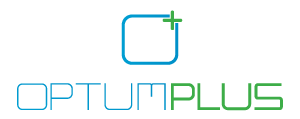Photo credit: Unknown
In Project Management Scope; Time; Cost are the three main constraint of a project delivery, Wherein each constraint forms the vertices, with quality as the central theme. This implies projects must be delivered within cost;, on time and meet the agreed scope no more or less. Each of these constraint has a direct impact on the other.
The image on this blog post which appeared on LinkedIn depicts a scenario where there was a mismatch between Client Expectations (Scope) and Client Budget (Cost). At a glance we would generally point a finger at the client and as we assume that it is the client who did not have a right cost against a scope.
Many of our clients are well versed in crafting or culling together a project where scope; time and cost are very practical and with a 10% margin of error, for which the client leaves a contingency of an equal amount.
However there are a lot of clients who come up with project scope; time and cost as a guesstimate a ballpark figure. Clients who have been given no time to come up with a realistic budget or have no idea how to create a realistic project.
If you realize as an architect; engineer; consultant; product or project manager that the project scope, time and cost are not realistic what would you do?
- One could go ahead and carry out the project and hope as you develop the project deliverables and/or through the various stages of the project it can be demonstrated to the client that scope; time and cost has to be modified to have a successful outcome at the end of the project.
- Or as the image on this blog post indicates you would have executed a project that has not met the client’s expectation and the result is a disappointed client who would hire you nor more.
- Alternatively, you could tell the client right away his project scope; time and budget is not realistic and potentially loose a client and an assignment.
One of the ways to tackle a situation where the project scope; time and cost are unrealistic as follows:
- Spend time upfront understand what his expectations are for the project – not just the technical parts – what does he expect to achieve at the end of the project.
- Once you have understood the expectation, temper the information and the scope with industry research and your expertise and experience
- With this mutually agreed scope you can arrive at a realistic time and cost..
Now you have a client who is singing with you from the same song sheet; then you can now assign time and cost and have a realistic scope; time and effort.
What you have gained here is the following:
- The confidence of the client
- A realistic scope; time and cost
- A project that can be reasonably executed
Lastly, you have turned yourself from just an architect; engineer; consultant; product or project manager to a client advocate. Where you have leverage your industry knowledge and experience into a specialized form of customer service in which you have focused on what is best for the customer. A change in our attitude and culture that enhances client experience in project delivery.
We at Optum+ go the extra mile to enhance customer experience in project delivery by changing our thinking to achieve an changed outcome.
What has been your experience in handling such situation, I would love to hear from you.

